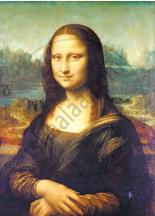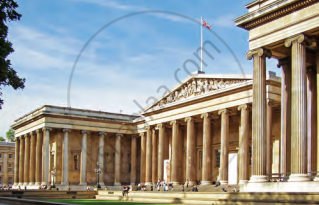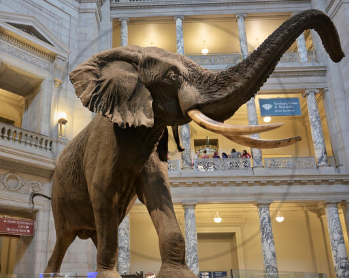Topics
Historiography : Development in the West
History : Applied History
Working of the Constitution
Historiography : Indian Tradition
The Electoral Process
Political Science : Working of the Indian Constitution
Applied History
Political Parties
History of Indian Arts
- What is ‘Art’?
- Indian Traditions of Visual Arts (Drik Kala): Painting
- Prehistoric Paintings
- Mural Paintings and Cave Painting
- Folk Styles of Paintings
- Classical Styles of Painting
- Miniature Paintings in Manuscripts
- Modern Indian Paintings
- Indian Traditions of Visual Arts (Drik Kala): Sculpture Art
- Indus Civilization Sculpture
- Folk Styles of Sculptural Art
- Classical Styles of Sculptural Art
- Indian Iconography
- Indian Traditions of Visual Arts (Drik Kala): Architecture and Sculpture
- Rock-cut Architecture
- Temple Architecture
- Indo-Islamic Architecture
- Indo-Gothic architecture
- Indian Traditions of Performing Arts
- Indian Theatre
- Indian Music
- Indian Dance
- Present Scenario of the Performing Arts
- Art, Applied Art, and Professional Opportunities
Social and Political Movements
- Movement
- Important Movements in India
- Tribal Movement
- Farmers Movement
- Worker's Movements
- Women’s Movement
- Environment Movements
- Consumer Movement
Mass Media and History
Challenges Faced by Indian Democracy
Entertainment and History
Sports and History
Tourism and History
Heritage Management
History - Imperialism
History - 20th Century Age of conflict
History - Emancipation of Asia and Africa
History - World after World War 2
Political Science
Geographical discoveries and colonization
- Concept for Geographical Discoveries and Colonization
Africa
- Imperialism - Africa
Asia: India, China, Japan
- Concept for Asia: India, China, Japan
Dictatorships in Europe, Second World War and world
- Concept on Dictatorships in Europe
- Concept for Second World War and World
First world war
- Concept on First World War
The League of Nations
- Concept for the League of Nations
Russian Revolution
- Concept for Russian Revolution
United Nations Organization
- Concept for United Nations Organization
Africa
- Emancipation of Africa
Asia
- Emancipation of Asia
Globalization
- Globalization After World War II
Scientific and Technological Progress
- Scientific and Technological Progress After World War II
Cold war
- Formation of the Cold War
Social Diversity and Democracy
- Social Diversity
- Coccept for Caste/Race and Democracy
- Concept for Language and Democracy
- Cocnept for Religion and Democracy
- Concept for Gender and Democracy
- Concept for Democracy and Diversity
Challenges to Democracy Remedial Measures to the Challenges
- Concept for Challenges to Democracy Remedial Measures to the Challenges
Internal work
Democracy
- Democracy - Meaning, Types and Characteristics
Political Parties and Types
- Political Parties
- Importance of Political Parties
- Major National and Regional Parties in India/ Types of Political Parties
Notes
Museums:
- A museum is a building or organization that houses and shows a collection of remains and other items with artistic, cultural, historical, or scientific significance.
- These artefacts are displayed in several public museums as temporary or permanent displays that are open to the public.
- While there are hundreds of regional museums spread over smaller cities, villages, and rural regions, the largest museums are found in the world's main cities.
- The objectives of museums might range from collection, preservation, and documentation to serve scholars and experts to engage with the general public.
- Supporting researchers is designed to benefit the public as well as benefit mankind.
- There are many different kinds of museums, including those devoted to art, natural history, science, war, and children.
- In 202 nations, there are more than 55,000 museums, according to the International Council of Museums (ICOM).
- The valuables gathered by members of royal and wealthy families in medieval Europe were organized and managed by museums.
Some Famous Museums:
| Museum | Details |
|
Monalisa Painting |
1. Louvre Museum:
|
|
British Museum |
2. British Museum:
|
|
National Museum of Natural History |
3. National Museum of Natural History:
|
Museums in India:
- The 'Asiatic Society of Bengal' founded the first museum in India, the 'Indian Museum,' in Kolkata in 1814 C.E. The 'Government Museum,' India's second museum, was founded in Chennai in 1851 C.E. The 'National Museum' was founded in 1949 in Delhi. There are currently multiple museums in various Indian states.
- Large museums typically have their own archives and libraries. Some museums have university affiliations. Museology courses are also available at such museums.
Famous Museums in India:
- Indian Museum, Kolkata;
- National Museum, Delhi;
- Chhatrapati Shivaji Maharaj Vastusangrahalay, Mumbai;
- Salarjang Museum, Hyderabad;
- The Calico Museum of Textiles, Ahmedabad.
Institutes which offer degree and diploma courses in Museology:
- National Museum, Delhi
- Maharaj Sayajirao University, Vadodara
- Kolkata University, Kolkata
- Banaras Hindu University, Varanasi
- Aligarh Muslim University, Aligarh
- Jivaji University, Gwalior
Chhatrapti Shivaji Maharaj Vastusangrahalay:
|
Chhatrapti Shivaji Maharaj Vastusangrahalay |
- A museum was founded in Mumbai in 1904 C.E. by a group of important locals as a way to remember the Prince of Wales's visit to the country.
- The museum building's foundation was established in the month of November 1905 CE.
- The 'Prince of Wales Museum of Western India' was chosen as the museum's name. In 1998 C.E., it was called 'Chhatrapati Shivaji Maharaj Vastusangrahalay.'
- The museum's structure was constructed in an Indo-Gothic design.
- In Mumbai, it has been accorded the designation of Grade I Heritage Building.
- The museum has roughly 50,000 artefacts in three categories: natural history, archaeology, and arts.
If you would like to contribute notes or other learning material, please submit them using the button below.




